Corpus of the Inscriptions of Campā
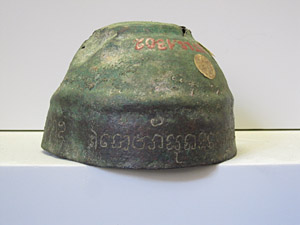
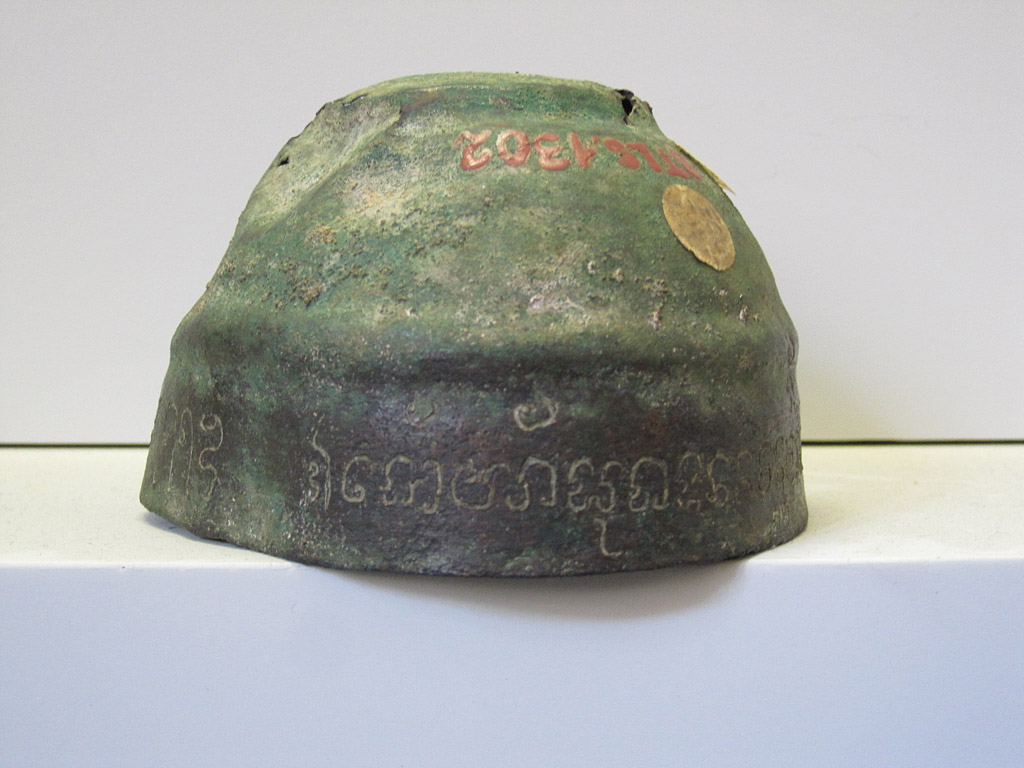
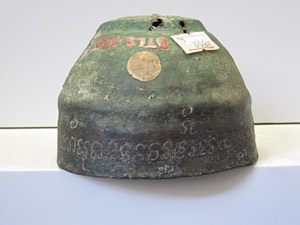
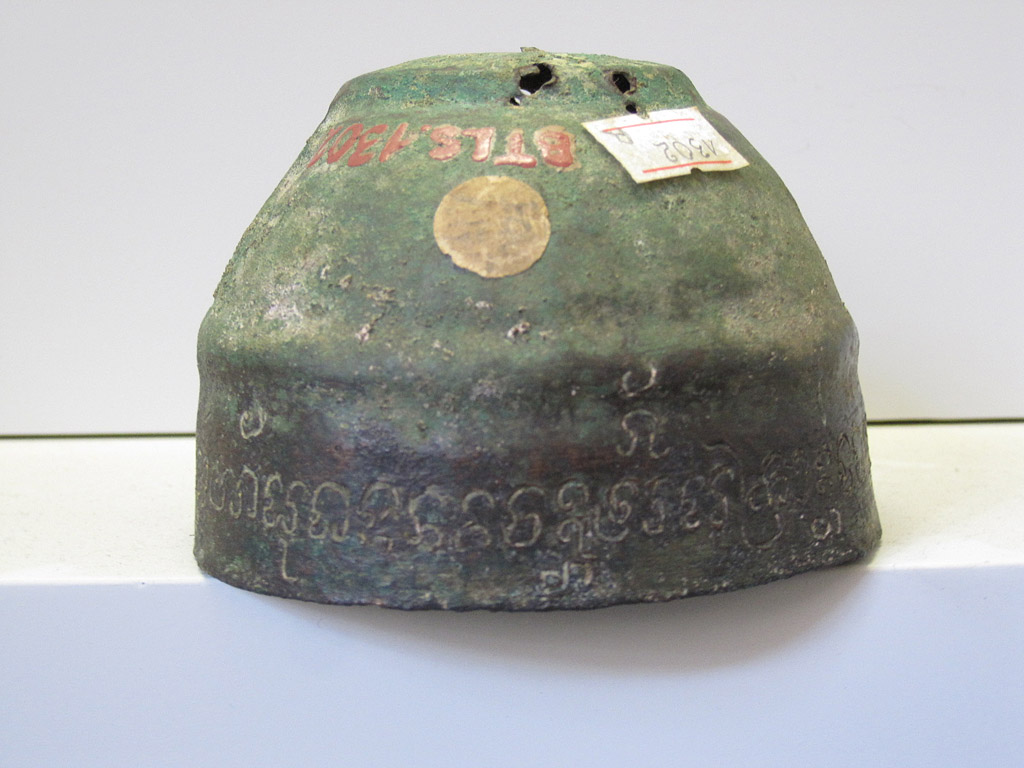
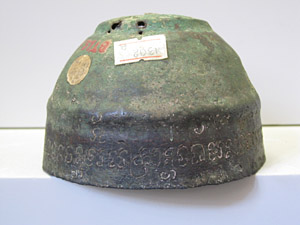
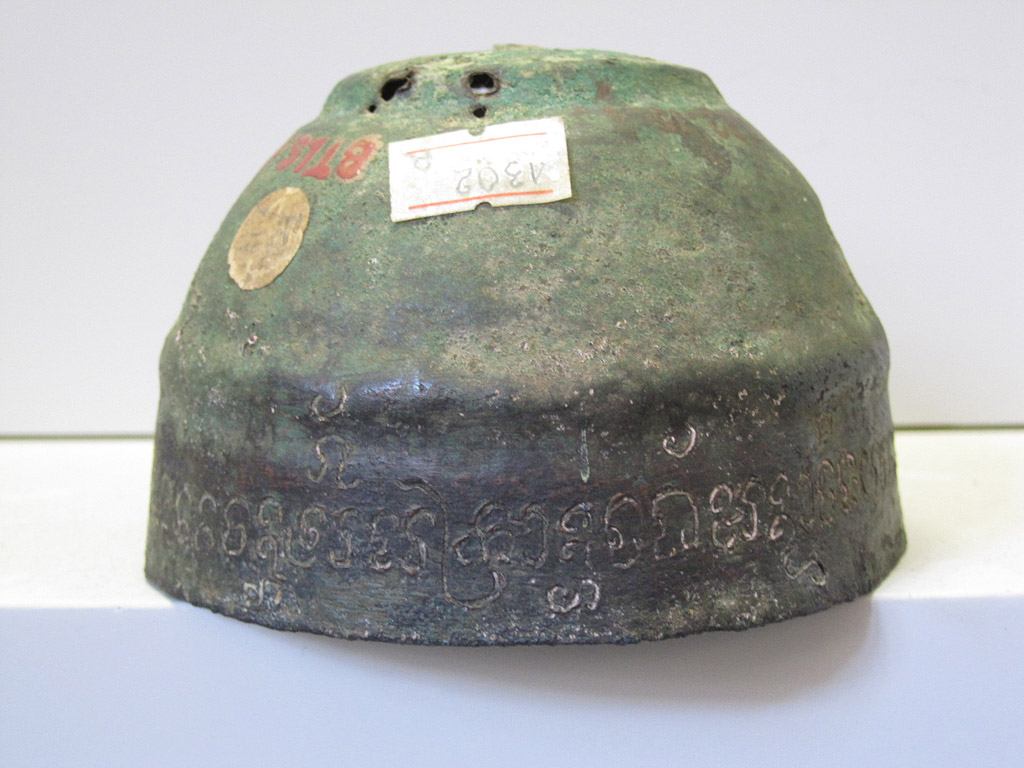

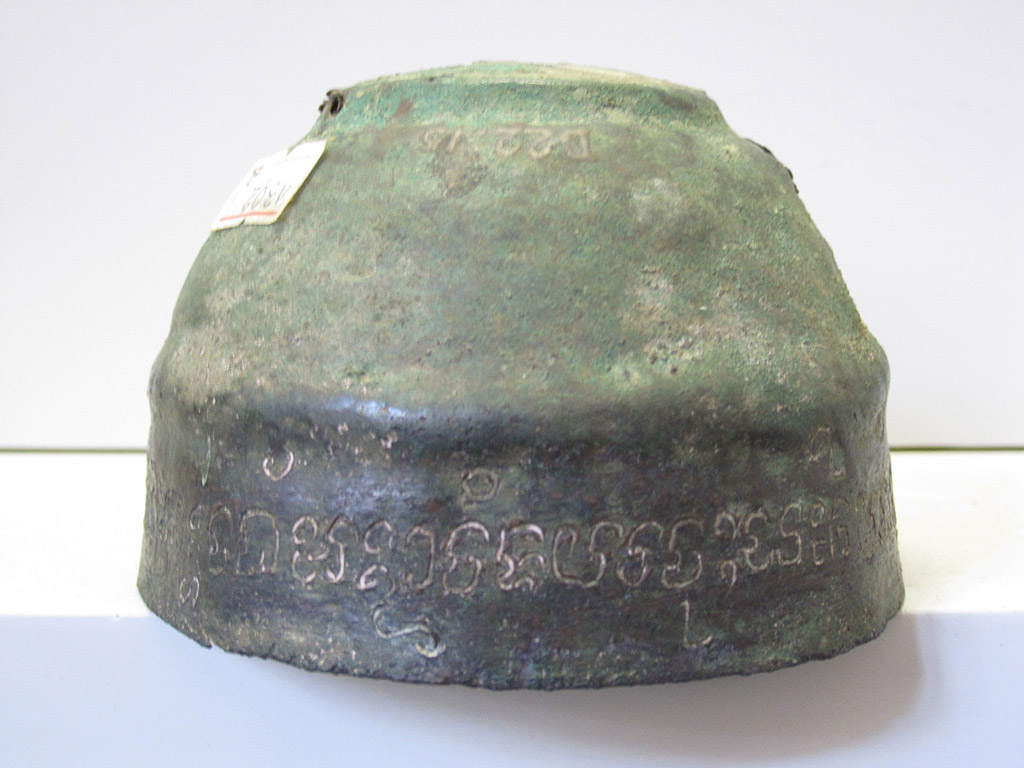



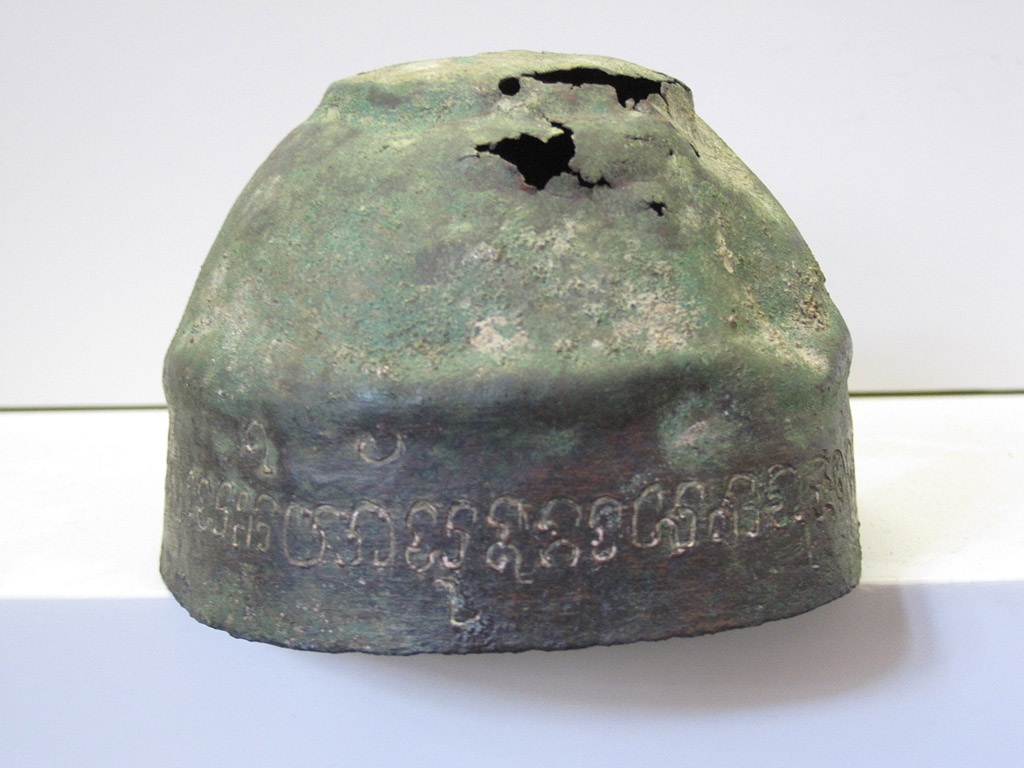
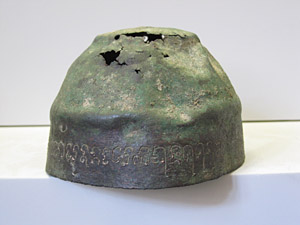
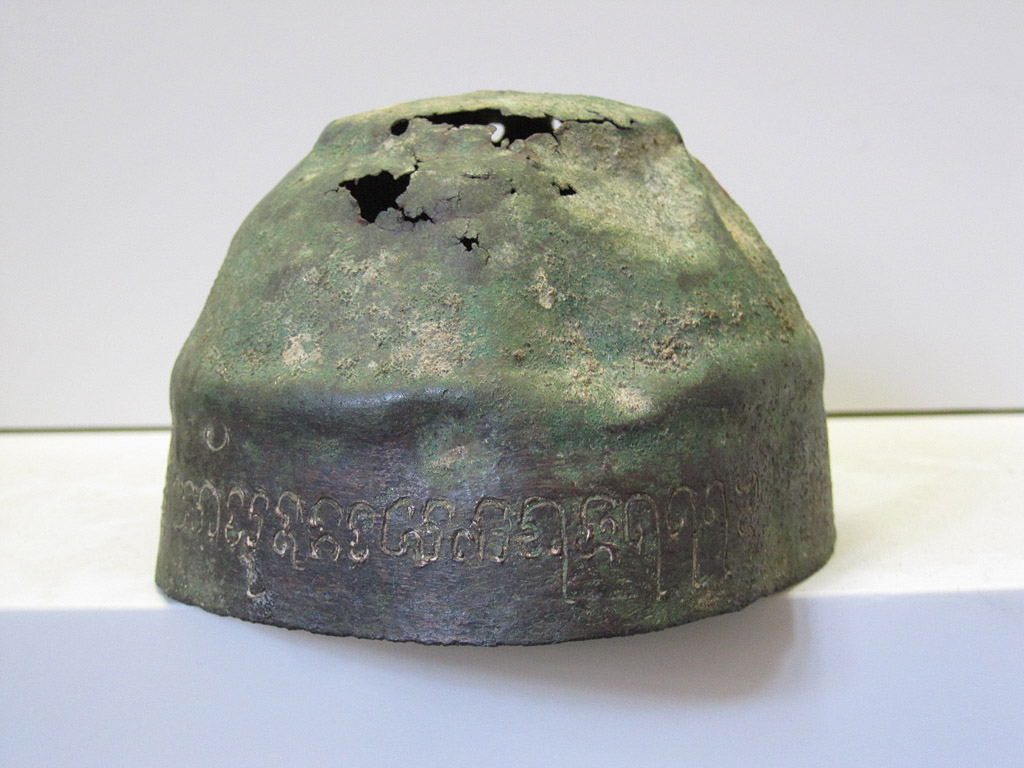
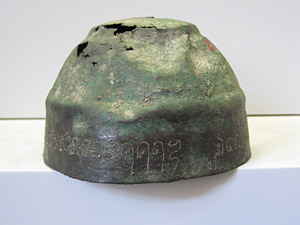
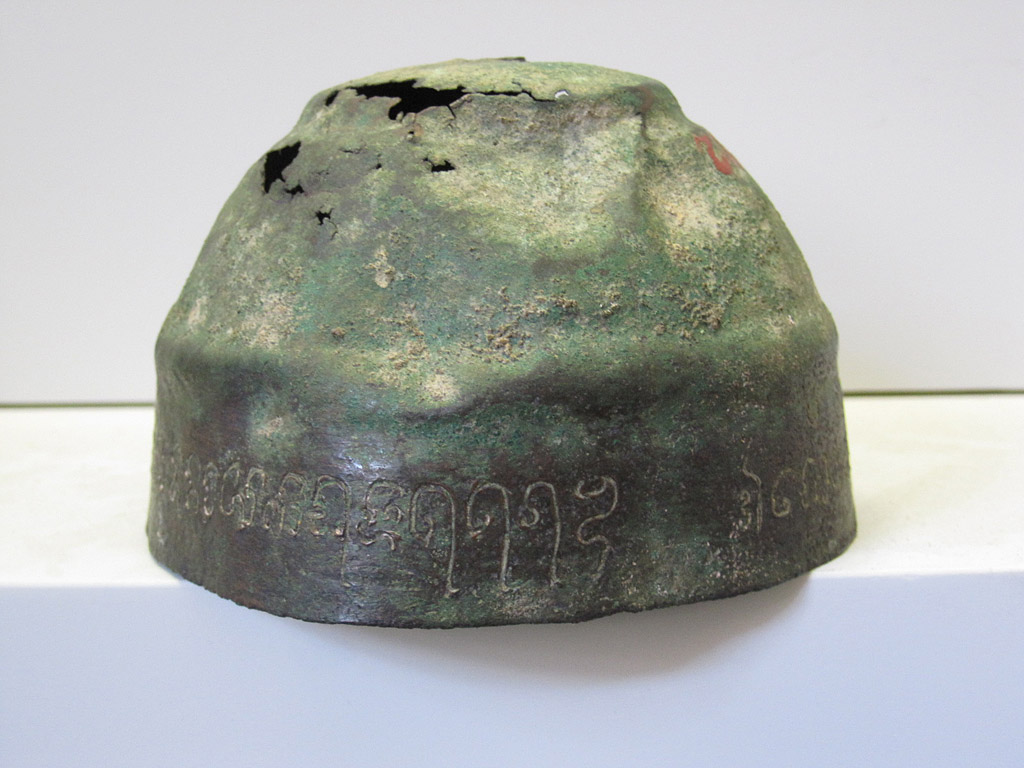
C. 118 Lid or bowl (?)
Please note: you are reviewing a preprint version of this publication. Contents here may change significantly in future versions. Scholars with specific interests are urged to consult all cited bibliography before using our texts and translations or drawing other significant conclusions.
Support An object that seems, judging by the orientation of the writing on it, to have served as a lid but has heretofore been interpreted as a bowl, made of copper;1 h. 7 cm, diameter (max.) 11, circumference (base) 33, circumference (top) 16.5.
Text One line engraved on the body of an object of uncertain function. Written in Old Cam.
Date 1179 Śaka (1257/8 CE).
Origin Temple of Po Nagar at Nha Trang (Khánh Hoà, Vietnam).
This object was discovered in 1906 in the course of excavations near the west wall of the temple of Po Nagar at Nha Trang. See Parmentier 1906: 291 n. 2:
The column “situation actuelle” still being left blank in Cœdès 1908, this piece must have entered the collection of the EFEO's Museum at Hanoi after 1908 and before 1915, when its presence there is recorded for the first time (Finot 1915d: 191). The associated museum inventory number D 22, 15 figures for the first time in the revised edition of the inventory of inscriptions (Cœdès 1923). It was among the pieces moved from Hanoi to Saigon in 1954 (see C. 143 and C. 145; Phạm Hữu Mý & Vương Hải Yến 1994: 28-29). We found it at the Museum of Vietnamese History in Hồ Chí Minh City during our visits in 2009 and following years (ECIC III: 475-476), as the object bearing inventory number BTLS 1302.Extrait du journal des fouilles : « 26 mars 1906. On trouve le long du mur O. de l'enceinte, à l'intérieur et vers le milieu, à 0m50 au-dessous du niveau général du sol, un vase en trois pièces, deux encore unies ensemble par une attache. Une inscription, que je crois chame, contourne la base. Par ailleurs le vase est en cuivre et sans intérêt artistique. »
Edition(s) An initial reading having been presented during a lecture at Paris (Finot 1906), the text was read directly from the original by father Durand, and published again with a different reading of the date in Parmentier 1906: 291 n. 2, whence Golzio 2004: 188; the reading of the date was again emended in Finot 1915d: 192; reading with new error for the date in Schweyer 2005a: 107 (see also the entry by the same author in Baptiste & Zéphir 2005, nr. 81 on pp. 297-298); an emendation proposed in ECIC III: 476
Facsimiles
- : n.
- : n.
The following text was edited by Arlo Griffiths.
|| ◇ The form of the opening sign, ignored in previous publications, is uncommon, but it is found also in the nearly contemporary inscription C. 58. — aum̃ ◇ All previous publications give oṅ. — sakrānta ◇ All previous publications give śakrānta. — 1179 ◇ Finot (1915); 1171 Finot (1906); 1187 Durand; 1119 Schweyer.
Translations
English
His majesty the royal venerable, Sir Sakrānta, man of Mandā Vijaya, has gifted [this] to the Lady of the Land. [Era of the] Śaka king 1178 (= 1257/8 C.E.).
French
Sa majesté le vénérable royal, sieur Sakrānta, homme de Mandā Vijaya, a offert [ceci] à la Dame du Pays. [Ère du] roi des Śaka 1178 (= 1257/8 de n.è.).
Commentary
Secondary Bibliography
- Parmentier 1909: 132.
- Majumdar 1927: 214.
Notes
- The indication for item 81 in Baptiste & Zéphir 2005: 297 that the material would be silver is obviously an error, for it is contradicted even by the text of the entry itself (“alliage cuivreux”). This entry was written by Anne-Valérie Schweyer. In a subsequent publication, she indicated the material as bronze (Schweyer 2005a: 107).



The idea forwarded by Schweyer in Baptiste & Zéphir 2005: 297 that the text was not meant to be read by humans but only by the goddess who was recipient of the donation, and that this would explain why the text was engraved upside-down on the object which is interpreted as a bowl, seems entirely ad hoc.
For the opening phraseology, cf. C. 5, ll. 17-18. Might the unique expression rājabhagavanta be equivalent to yuvarāja? It seems more likely that this expression is intended as a compound, than as two separate words, as previous editions have assumed. The name Sakrānta is possibly attested again, although with orthographic variants, as sakram̃ttha in C. 1 and as sakram̃tthi in C. 43.